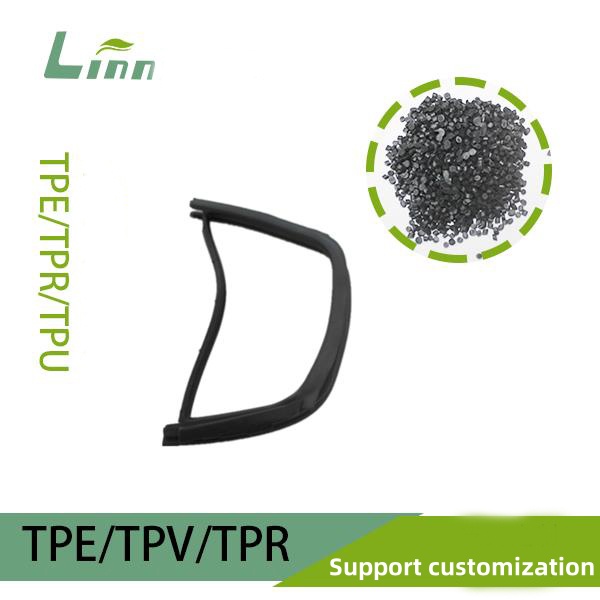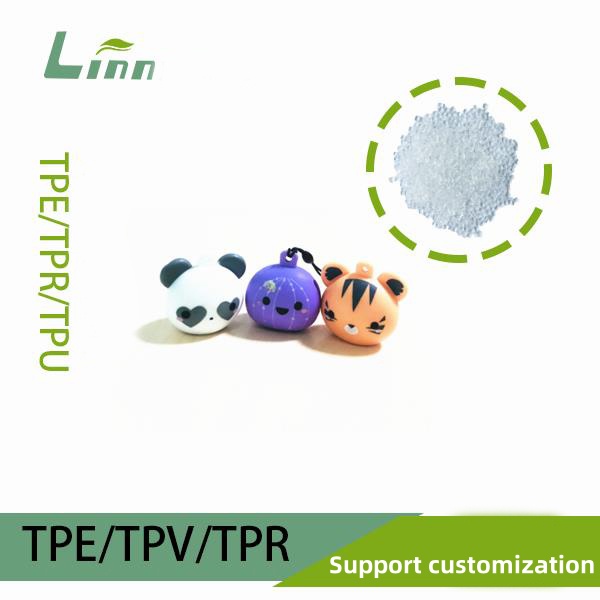Hey there! If you’ve landed here, you’re probably curious about how to turn TPE plastic granules into a top-notch running track. I’ve been in the synthetic track industry for years, and I’ve seen it all— from small community projects to massive stadium builds. Today, I’m going to walk you through the process step-by-step, share some insider tips, and make sure you’ve got everything you need to get started. Whether you’re a contractor, a school administrator, or just someone with a passion for sports surfaces, I’ve got your back. Let’s dive in!
What Are TPE Plastic Granules, Anyway?
First things first, let’s talk about what we’re working with. TPE stands for Thermoplastic Elastomer, a fancy way of saying it’s a flexible, durable material that combines the best of plastic and rubber. These granules are small, colorful pellets that form the backbone of many modern running tracks. Unlike traditional EPDM rubber, TPE is recyclable, weather-resistant, and super versatile, which makes it a go-to choice for eco-conscious projects.
I remember the first time I handled TPE granules on a job site— they felt lighter than I expected, but don’t let that fool you. Once they’re mixed and laid down, they create a surface that’s tough enough to handle years of pounding feet. So, how do we transform these little pellets into a smooth, springy running track? Let’s break it down.

Step-by-Step: Building a Running Track with TPE Granules
Building a track isn’t rocket science, but it does take some know-how. Here’s how I do it, based on years of trial, error, and a few muddy boots.
Step 1: Plan Your Track
Before you even touch those granules, you need a solid plan. How big is your track? Standard ovals are 400 meters, but you might be working with a smaller space. Measure your area carefully— I’ve seen projects go sideways because someone skipped this step and ended up short on materials. You’ll also need to decide on thickness. For professional tracks, 13mm is the sweet spot, but recreational ones can get by with 8-10mm.
Pro tip: Check local regulations. Some places have strict rules about drainage or environmental impact, and you don’t want to redo your work.
Step 2: Prepare the Base
A track is only as good as what’s underneath it. Start with a stable foundation— usually a layer of compacted gravel or asphalt. I’ve laid tracks on both, and asphalt tends to be my favorite because it’s smoother and holds up better over time. Make sure the surface is level; even a slight slope can throw off runners.
Drainage is key here. If water pools up, your track will degrade faster than you can say “rain delay.” Install a slight gradient (about 1-2%) and add drainage channels if needed. Trust me, I learned this the hard way after a rainy season turned one of my early projects into a swamp.

Step 3: Mix the TPE Granules
Now we’re getting to the fun part! You’ll need to mix your TPE granules with a binder— usually polyurethane (PU). The ratio depends on your project, but a common mix is 1 part binder to 5 parts granules by weight. I use Linn’s TPE granules because they’re consistent in size and color, which makes mixing a breeze.
Grab a mechanical mixer— doing this by hand is a workout you don’t want. The goal is a uniform blend that’s sticky but not gloopy. Too much binder, and it’ll feel like concrete; too little, and it won’t hold together. It’s a bit like baking— you’ll get a feel for it after a few batches.
Step 4: Lay the Mixture
Time to spread the love! Pour your TPE mix onto the base and use a paving machine or hand trowels to smooth it out. For a pro finish, aim for even thickness— I keep a depth gauge handy to avoid any surprises. Work in sections, especially if it’s a big track, and keep an eye on the weather. Rain can ruin a fresh pour, and I’ve had to scramble under tarps more than once to save a job.
Let it cure for 24-48 hours, depending on temperature and humidity. Hot days speed things up, but don’t rush it— a half-cured track is a recipe for cracks.

Step 5: Add the Top Layer (Optional)
For extra durability and grip, some tracks get a spray coat of TPE granules mixed with PU. This is common for competition tracks where traction matters most. I’ve done this on a few high school projects, and the feedback from athletes is always glowing— they love the bounce and feel.
Step 6: Mark the Lines
Once your surface is set, it’s time to paint the lanes. Use a high-quality, UV-resistant paint— cheap stuff fades fast, and I’ve seen tracks look shabby after just one season. A standard 400m track has 6-8 lanes, each 1.22m wide. Get a stencil and a steady hand, or hire a pro if you’re not feeling artsy.
Step 7: Test and Maintain
Walk the track, run on it, bounce a ball— make sure it feels right. Over the years, I’ve found that a good track has a slight give underfoot but doesn’t sink. For upkeep, sweep it regularly and hose it down when needed. TPE is low-maintenance, but a little TLC goes a long way.
Tools and Materials You’ll Need
Here’s a quick rundown of what I keep in my toolkit for a TPE track project. Having the right gear saves headaches— believe me, I’ve improvised with less and regretted it.
| Item | Purpose | Notes |
|---|---|---|
| TPE Granules | Main surface material | I stick with Linn for quality |
| Polyurethane Binder | Binds granules together | Get a high-grade, single-component PU |
| Mixer | Blends granules and binder | Rent a drum mixer for big jobs |
| Paving Machine | Spreads mix evenly | Hand trowels work for small areas |
| Depth Gauge | Ensures consistent thickness | Cheap but essential |
| Paint and Stencils | Marks lanes and lines | UV-resistant paint is a must |
| Gravel/Asphalt | Base layer | Check local suppliers for quality |
Why Choose TPE Over Other Materials?
I get this question a lot— why TPE instead of EPDM or rubber crumbs? Here’s my take. TPE is lighter, which cuts shipping costs, and it’s recyclable, which matters if you’re pitching to green-minded clients. It’s also less prone to fading— I’ve seen EPDM tracks turn dull gray after a few years, while TPE holds its color like a champ.
That said, it’s not perfect. TPE can be pricier upfront, and it’s sensitive to heat during installation— too hot, and it cures unevenly. But for me, the pros outweigh the cons, especially when I see runners hitting their stride on a track I’ve built.

Real-World Example: My First TPE Track
Let me tell you about my first TPE project— a 200m track for a local school. I was nervous as heck, double-checking every step. The base was asphalt, and I used Linn’s red TPE granules for that classic look. Mixing took longer than I expected— the binder was stubborn in the cool weather— but once it was down, the kids couldn’t stop running on it. Years later, it’s still holding up, and I drive by sometimes just to smile at it.
Common Mistakes to Avoid
I’ve messed up enough times to know what not to do. Here are some pitfalls I’ve learned to dodge:
Skipping the base prep: A shaky foundation ruins everything. Take your time here.
Overmixing the binder: It’ll harden too fast, and you’ll be stuck with a lumpy mess.
Ignoring weather: Rain or extreme heat can wreck your pour. Check the forecast!
Cheap paint: Faded lines look sloppy and need constant touch-ups.

How Long Does a TPE Track Last?
With proper care, a TPE track can last 8-12 years, sometimes more. I’ve seen Linn tracks hit the 15-year mark with minimal wear, thanks to their UV resistance. Compare that to traditional rubber, which might need replacing after 5-7 years, and you see why I’m a fan.
For hard data, check out this study from the International Association of Athletics Federations (IAAF)— they’ve got stats on track longevity that back this up.
Cost Breakdown
Budget’s always a hot topic. Here’s a rough estimate based on my experience for a 400m track:
| Component | Cost (USD) | Notes |
|---|---|---|
| TPE Granules | $5,000 – $7,000 | Depends on color and quantity |
| PU Binder | $2,000 – $3,000 | Higher grade = higher cost |
| Base Layer | $10,000 – $15,000 | Asphalt is pricier than gravel |
| Labor | $8,000 – $12,000 | DIY cuts this down |
| Equipment Rental | $1,000 – $2,000 | Mixer, paver, etc. |
| Total | $26,000 – $39,000 | Ballpark figure— adjust for scale |
Smaller tracks or DIY efforts can slash this, but quality materials like Linn’s TPE are worth the investment.
Final Thoughts
Building a running track with TPE granules is a labor of love— it’s messy, it’s precise, and it’s incredibly rewarding. I’ve poured my heart into every project, and there’s nothing like seeing athletes break records or kids race their friends on a surface I helped create. If you’re ready to tackle this, start small, test your mix, and don’t be afraid to ask for advice. You’ve got this!

Q&A: Your Burning Questions Answered
Q: Can I use TPE granules for an indoor track?
A: Absolutely! I’ve done indoor projects with TPE— it’s great for cushioning and doesn’t off-gas like some rubbers. Just ensure good ventilation during installation.
Q: How do I fix cracks if they show up?
A: Small cracks happen. Mix a little TPE with PU binder, patch it in, and smooth it out. I’ve saved a few tracks this way— no one’s noticed the repairs!
Q: Is TPE safe for kids?
A: Yep, it’s non-toxic once cured. I’ve laid tracks at schools and playgrounds with no issues. Check the safety data sheet from your supplier to be sure.
Q: How do I pick the right color?
A: Red’s classic, but blue and green are trending. I’d say go with what fits your vibe— Linn’s got a solid range to choose from.
There you have it— everything I’ve learned about crafting a running track with TPE plastic granules. Got more questions? Drop them below, and I’ll chime in with what I know. Happy building!





